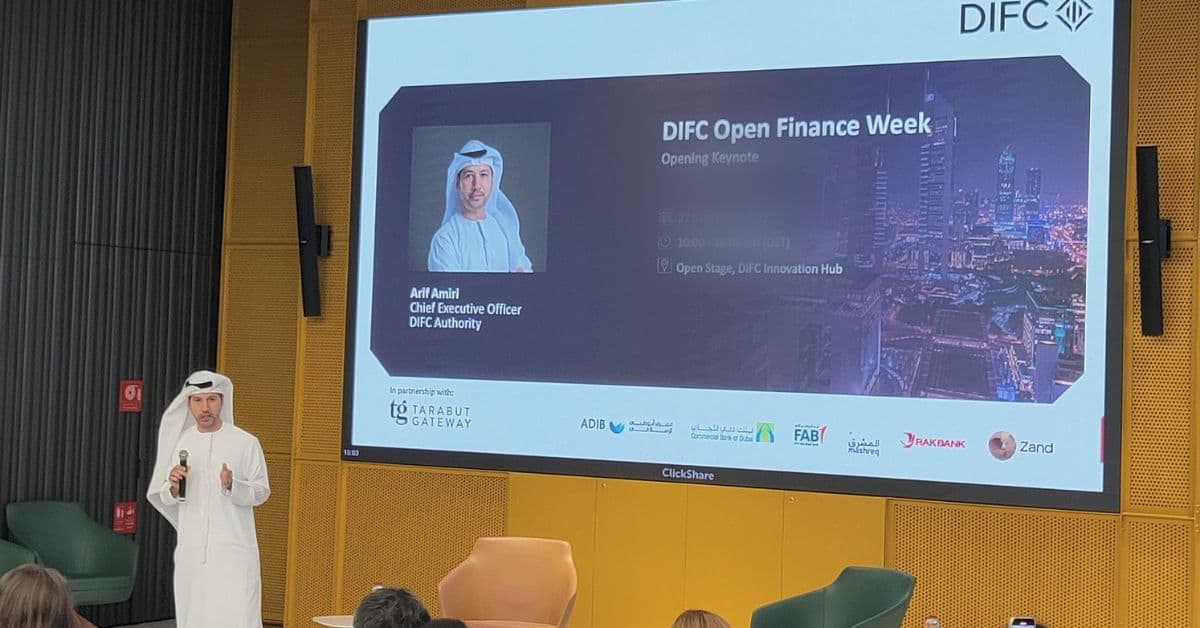DUBAI, UAE — When discussing how banks will operate in the future, the buzzword is cognitive banking. It refers to using artificial intelligence and machine learning to make banking smarter and faster. AI and Open Banking are two key examples of this collaborative approach.
Open Banking and AI are a perfect match. Since open banking gives consumers control over their data and the ability to share it with whichever company they choose, institutions need systems that can easily understand, sort, and act on what is being supplied to them.
“The concept of open banking is a major turning point in the financial sector,” says Adnan Erriade, CCO of Tarabut Gateway, MENA’s largest Open Banking platform.
“Essentially, it involves regulated financial data sharing among banks, fintech, and other authorized third-party providers. The technology enabling this sharing is Application Programming Interfaces (APIs), which control access to the financial data,” he told TRENDS.

According to Erriade, combining open banking and AI will revolutionize the financial industry. “AI is expected to play a significant role in shaping the region’s financial services future, whether by driving open banking adoption or transforming how people manage their finances.”
Financial service providers can provide more personalized experiences to customers and improve their products and services by leveraging AI technology. For instance, AI can help quickly analyze large amounts of data and make informed decisions, leading to a more efficient and personalized customer experience.
Moreover, AI has the potential to accelerate the growth of embedded finance. It can automate many manual processes and provide users with customized, real-time insights by integrating financial services into non-financial products and services. By analyzing customer data, AI can recommend personalized financial products such as insurance or investments ideally suited to users’ daily lives. Thus, financial services will become more accessible and convenient for everyone because of this level of integration.
Key beneficiaries
Everyone in the financial ecosystem stands to gain from open banking, but the biggest beneficiaries are end customers. With open banking, customers own their financial data, which banks previously controlled. With the customer’s consent, this helps provide a superior customer experience by using financial data to create personalized products and services tailored to individual needs.

Furthermore, open banking is changing the way consumers handle their finances. Transactions can now be completed more quickly and efficiently, giving consumers greater control over their financial lives.
“Through open banking, consumers can enjoy enhanced banking experiences, for example, account aggregation. This feature allows customers to view all their financial accounts in one consolidated view, providing a better understanding of their financial position and enabling them to make more informed financial decisions,” Erriade added.
On the other hand, open banking is beneficial not only to customers but also to banks themselves. By leveraging the data shared through open banking, banks in the region can offer their customers more valuable products and services and an enhanced experience, leading to higher acquisition, retention, and customer satisfaction rates.
Additionally, banks can also benefit from building new revenue streams through open banking. “In the MENA region, banks have a growing appetite and receptiveness towards open banking. They are already thinking beyond the compliance checkpoint and having conversations on the use-cases and commercial opportunities open banking can provide. This shift towards open banking is indicative of the potential benefits banks in the region can expect to reap from this revolutionary concept,” Erriade mentioned.
Furthermore, open banking provides them with access to more detailed financial data leads to improved risk management, allowing for better-informed credit decisions and reduced risk in lending practices.
Growing interest
The MENA region’s interest in open banking innovation is driven by the need to diversify its economy and create a modern, data-driven economy that can compete globally.
With the financial services sector being one of the key drivers of change, open banking presents a unique opportunity for the region to lead the way in this field.
According to Erriade, open banking’s introduction to the region increases competition in the financial services sector and aids its development.
“Regulators have learned from other global open banking implementations and have taken on the role of innovators, creating open banking frameworks for their respective markets. This new technique aligns with the economic visions and goals of many countries in the region for 2030”.
One of the key advantages of the MENA region is its high internet penetration rate, which is expected to continue growing in the coming years. This means the region has a large and growing population of tech-savvy consumers who are open to using digital financial services. The young demographic also plays a role in the region’s readiness to adopt new technologies, as they are more likely to be familiar with digital devices and services and less likely to be held back by traditional ways of doing things.
Another advantage of the MENA region is the recent efforts to create a more favorable environment for innovation and entrepreneurship. Many regional governments invest in tech startups and offer various incentives to encourage innovation and entrepreneurship. This, in turn, is expected to boost the development of new financial services and products, taking advantage of open banking.
Finally, open banking is a growing trend globally. The MENA region is eager to keep pace with the rest of the world and establish itself as a significant player in the financial services industry.
Erriade believes that open banking is here to stay and is becoming increasingly prevalent in the region.
Bahrain, for example, was the first to launch open banking regulations and is now in the process of implementing an open finance framework.
Saudi Arabia also introduced its Open Banking policy in 2021 and is currently in the early stages of implementation. In addition, the Saudi Arabian Monetary Authority has recently launched the AIS framework, with the PIS framework set to launch later in the year.
In 2020, Oman released its Open API strategy, and Kuwait is exploring open banking use cases within its regulatory sandbox. Egypt’s central bank has recently made its national payment system more versatile, laying the foundation for the growth of an open banking ecosystem. Jordan is currently in the preliminary stages of open banking regulation. In the next five years, the region will likely continue to move forward with adopting open banking and its regulation.

